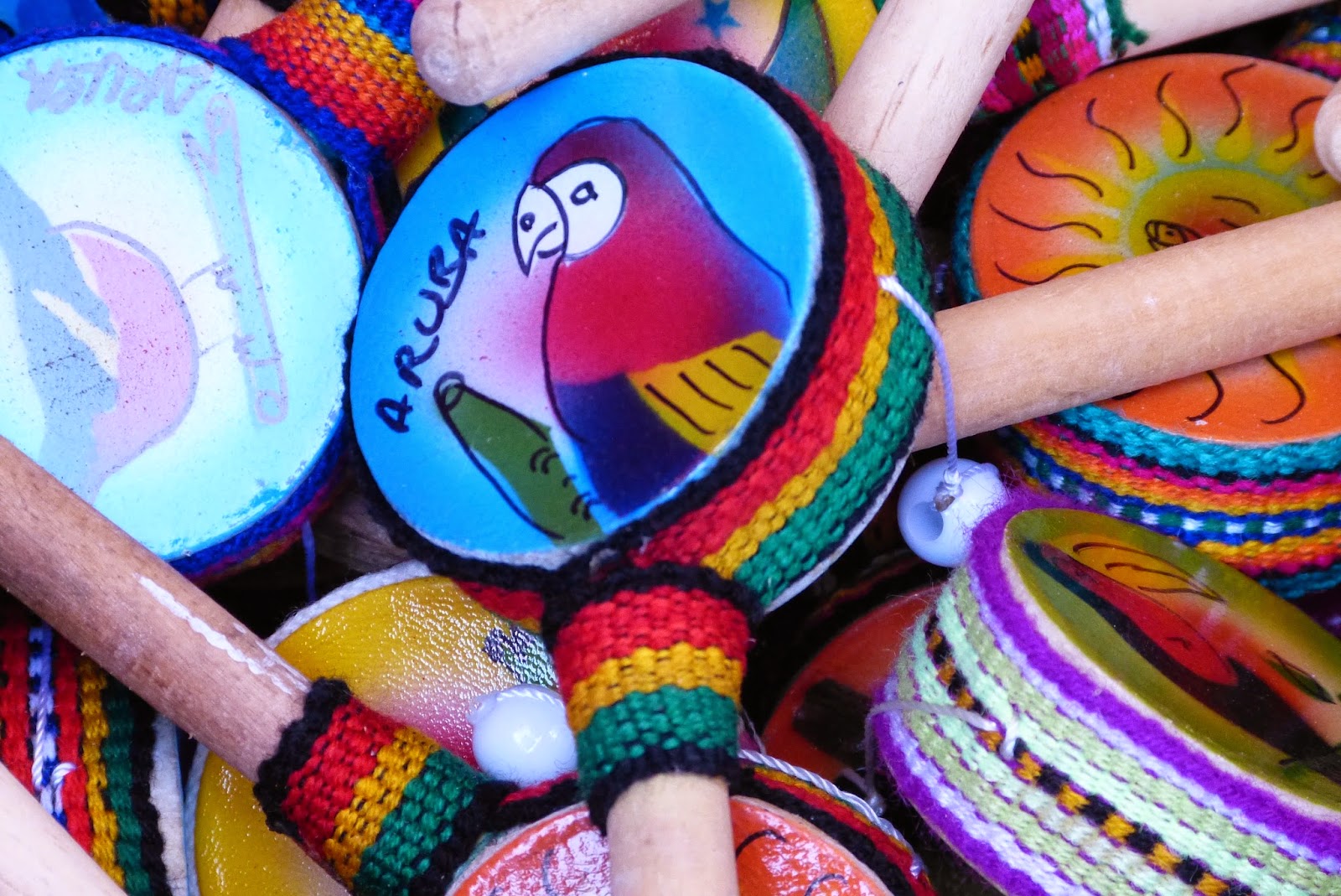 |
| "Arizona by the Sea," otherwise known as Bonaire |
If you haven’t yet made it to the Leeward ABCs in the Southern
Caribbean, off the Venezuelan coast, get onboard quick. They’re a confluence of
Dutch, Caribbean and Spanish vibes, desert and ocean landscapes, and each is
colorful and interesting in its own way. And best of all for those of us who
like to cruise on the cheap—there’s a ton to do just a stone’s throw from the
pier.
Here, in brief, are some of the walkable highlights of the ABCs:
Aruba: Shopping, Iguanas and
Anne Frank
What you notice most about Oranjestad, the capital of Aruba and port
city, is color. Buildings in pink and yellow, trimmed in white. Green parakeets
perched on palm trees. Hues of blue sea. Princess calls it “Holland meets Disney’s
Fantasia.”But no backwater is this; Aruba is vibrant and bustling. And a lot of fun to explore. Pose for the tablet camera while you drape yourself over the giant “I love [heart] Aruba.” And if you haven’t already lost enough money on the ship, there are some casinos that, to quote a cruise director, “would welcome your donation.”
 |
| Some of the colors of Aruba |
Greenery. If you walk straight up L.G. Smith
Boulevard, the city’s main drag, you’ll come to Wilhelmina Park. Queen Wilhelmina
herself reigns from the center of this city oasis, and don’t miss the sweet tribute
to Anne Frank. Sometimes, there will be picnickers and teens with guitars, but
you can always count on dozens of wild iguanas because the park staff keeps
them coming by doling out handfuls of greens.
Shopping. Aruba gets an
“A” for shopping. The prices are among the best in the Caribbean for
knickknacks. And while most of it comes to the Caribbean by way of China, you
can also get the delicate mopa mopa crafts
that are made locally from tree resin, Dutch edam and any manner of faux Delft
souvenirs. There are several shopping centers and vendors along L.G. Smith, as
well as vendors clustered near the port.
Bonaire: No Snorkeling Needed
This lovely island is not often visited by the mass market ships and
it’s really a shame. It’s by far my favorite. The ship docks in the capital
city of Kralendijk (pronounced Crah-len-deyk) and the port area is positively
pristine. |
| The pristine waters of Bonaire |
Ocean walk. Just off the pier is the Promenade, a walkway along
the stunning sea. No snorkeling needed here; the show can be seen right from
where you stroll, while you stay nice and dry. The water is so unbelievably
clear that we watched, mouths hanging open, as schools of green-and-blue fish
swam past us. It was as if we were at the zoo and the fish had been put there
for our amusement. Shells, crabs and coral litter the beach below the
walkway, across from homes adorned with cactus and hibiscus.
Shopping. You will think the ship took a wrong turn and landed
in Scarsdale. Vendors’ wares are more made-at-home than made-in-China. Think
painted soaps and needlework vs. t-shirts and ashtrays. The main shopping
street has some interesting tourist shops and a chance to buy the local
craft—painted gourds, which make great Christmas ornaments.
Bon Bini* to Curaçao
 |
| Bridging to the Punda in Curacao |
Strolling. The Punda has some European-style cafes along the
water and many shops both for tourists and locals. There’s also the Mikve
Israel Emanual Synagogue, circa 1732 and the oldest synagogue in continuous use
in the Western Hemisphere.
Shopping. Unique to Willemstad, in the old town, is the floating
market, where vendors from Venezuela sell their papayas and pineapples from
their small wooden boats. If you’re not inspired to try some, at least pull out
your cell phone for some great photo-taking. And before you leave Curaçao,
consider taking home some of the local spirit; you can’t miss it in the liquor
store—it’s just about the only thing that’s blue.
* Means “welcome” in the local Papiamento
dialect.
No comments:
Post a Comment